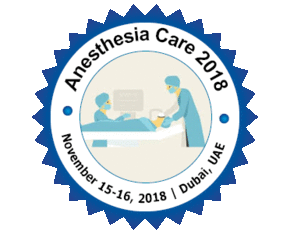
Pallavi Ahluwalia
Teerthanker Mahaveer Medical College and Research Hospital, India
Title: Customizing fluids in chronic renal failure
Biography
Biography: Pallavi Ahluwalia
Abstract
Fluid management is a very complicated and unresolved riddle. Th e debate about fl uid management in the operating
room is still not concluded. Th e traditional approach to perioperative fl uid management has no sound evidence base
and causes perioperative fl uid and salt overload. Enhanced recovery programs emphasize the avoidance of salt and water
overload. Enhanced recovery aft er surgery1 (ERAS) programs have gained accep-tance as a multifactorial, evidence-driven
multidisciplinary way of managing patients undergoing surgery. Th e primary components of ERAS programs are careful
preoperative optimization, improvements in intraoperative management, particularly with regard to fl uid management.
Excess salt and fl uid in the perioperative period is now generally accepted as harmful. Th e various problems associated with
classical approach are listed below (Table-1). Lowell and associates2 studied postoperative criti¬cal care patients and found
that perioperative weight gain (fl uid excess) was highly associated with increase in mortality. Fluid and salt excess can lead
to edema of tissues particularly airways, increased lung water, and cardiac failure. Relative fl uid restriction (as compared
with the traditional approach) is associated with improved outcomes and have been found in prospective studies of general
surgical patients published in the surgery and Anesthesiology literature. Few other benefi ts like shorter hospital lengths of
stay, improved wound healing, fewer surgical infections, and fewer cardiovascular and pulmonary complications have all been
associated with relative fl uid restriction and are supported by a metaanalysis. 5 Zero fl uid balance is recommended, using a
goal-directed approach . Administering goal-directed fl uid therapy involves cardiovascular monitoring such as minimally
invasive cardiac output and the application of an algorithm or guidelines specifi c to fl uid and hemodynamic management.
Goal-directed fl uid therapy6,7 and enhanced recovery programs increase quality by decreasing variability in practice with
evidence-based management. Decreased cost results from lesser perioperative morbidity and streamlined care delivery. Various
monitors may be used for goal-directed fl uid therapy, ranging from invasive (pulmonary artery catheter) to non-invasive
(fi nger cuff cardiac output). Th e choices are based on the clinical situations and the individual or institutional preference. Th e
most common monitors used are oesophageal Doppler and arterial pulse wave analysis systems. Goal-directed fl uid therapy
algorithms may be based on cardiovascular performance (e.g., cardiac output) or preload responsiveness (e.g., stroke volume
variation (SVV). Algorithms t incorporating both is likely to be the most eff ective. GDT is recommended for major procedures
during which substantial blood loss or fl uid shift s are anticipated. Th ese may include major general, vascular, urologic, or
orthopaedic surgeries such as pancreatec-tomy, open colectomy, radical cystectomy .Major patient comorbidities such as
cardiac disease or a debilitated state may prompt the use of GDT as well. GDT has been studied in cardiac surgery with some
positive results. Certainly cardiac anesthesiologists and surgeons apply goals, hemodynamic monitoring, and interventions
in managing their patients perioperatively. Goal-directed fl uid therapy, enhanced recovery programs, and the perioperative
surgical home are ways to control costs while improving quality.

